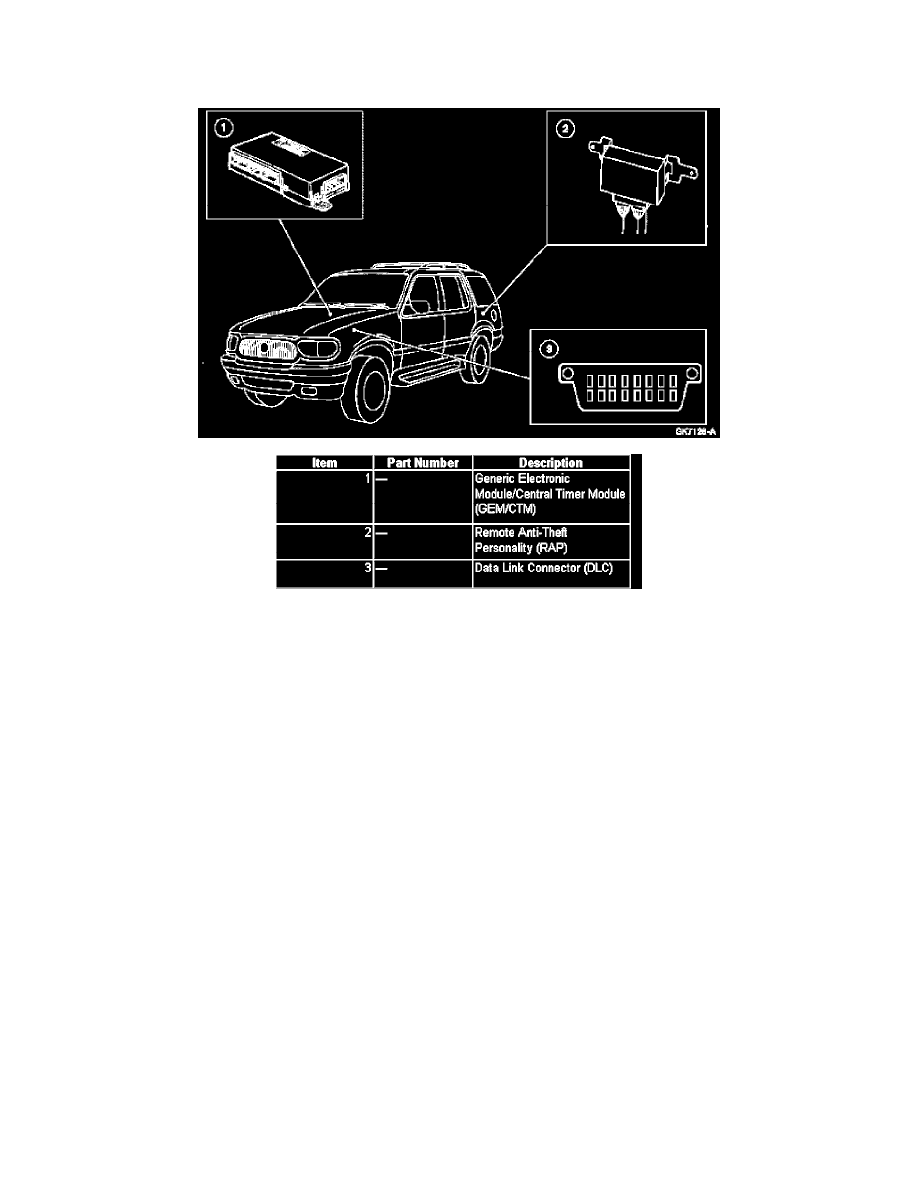Ranger 2WD V6-3.0L VIN U (1998)

General Module: Description and Operation
Multi-Function Control Modules
The remote anti-theft personality (RAP) module controls the perimeter anti-theft, the keyless entry, and computer operated locks systems. For further
information on the perimeter anti-theft, refer to Antitheft and Alarm Systems. See: Accessories and Optional Equipment/Antitheft and Alarm Systems
For further information on the keyless entry and computer operated locks, refer to Keyless Entry. See: Accessories and Optional Equipment/Antitheft
and Alarm Systems/Keyless Entry
The generic electronic module (GEM) is equipped on four-wheel drive (control trac system) or two-wheel drive vehicles with power windows. The
central timer module (CTM) is equipped only on the two-wheel drive vehicles without power windows.
NOTE: GEM/CTM diagnostics are compatible with New Generation STAR (NGS) Tester.
The GEM/CTM incorporates the functions of several different modules into one and offers diagnostics to easily locate and repair concerns affecting
the subsystems that it controls.
The GEM/CTM constantly monitors the systems under its control and reports a concern in the form of a diagnostic trouble code (DTC). A DTC can
be retrieved with NGS Tester through the communication link.
NGS Tester is a menu-driven tester that allows the user to run specific diagnostic tests. It can isolate faults in the GEM/CTM subsystems through a
symptom-driven diagnostic procedure. Connecting NGS Tester to the GEM/CTM communication link will not alert the GEM/CTM. If the GEM/CTM
is in sleep mode when the diagnostic connector is plugged in, the GEM/CTM must be activated. If the communication link cannot be established, it
will advise to turn the ignition to RUN.
The GEM/CTM control system has two modes of operation, the normal operating mode and the tester dependent diagnostics mode.
NOTE: The GEM/CTM can only detect open circuit/short to ground (GND) faults when the GEM/CTM is not energizing a load, and short to battery
faults when the GEM/CTM is attempting to energize a load.
The normal operation of the GEM/CTM can detect errors. An integral part of the normal GEM/CTM operation is the continuous diagnostic capability.
Continuous diagnostics detects errors and changes the GEM/CTM control strategy. There is no warning light for the GEM/CTM; therefore, a DTC
concern will direct the technician to the GEM/CTM. Examples of faults that may be detected during normal operation include:
GEM/CTM continuous self-test (RAM, ROM, EEPROM, A/D checking).
